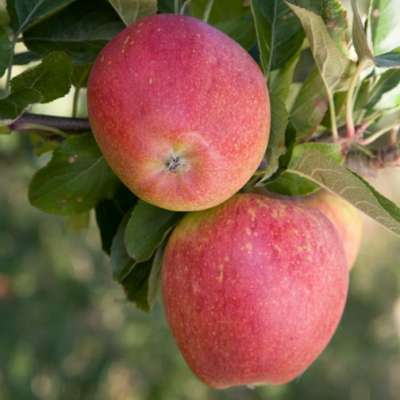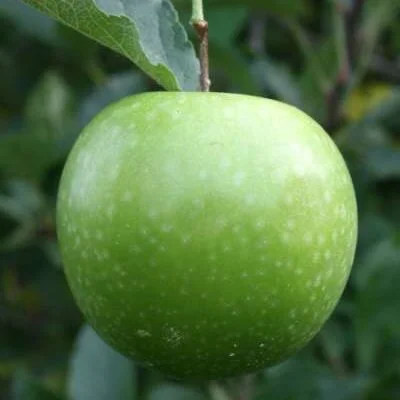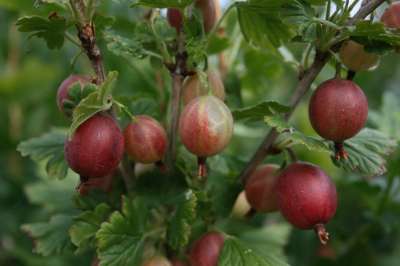Your basket is currently empty!
Hazelnuts, Cobnuts & Filberts
An Introduction & Cultivation Guide
This article aims to explain and encourage the use and planting of these worthwhile and adaptable bushy trees.For a start, you may be confused about the difference between Hazels, Cobnuts and Filberts.There are two main species of ‘Corylus’ – which make up this family; in England Corylus avellanais the main species and that which may be found growing in native hedgerows. This is commonly called a Cobnut.The filbert is the more seldom encountered Corylus maxima. A Hazelnut is merely a common name that may apply to either.Both Corylus avellana and Corylus maxima are similar in appearance and garden use and it would be difficult to recommendone over the other. To the average gardener it probably isn’t worth worrying over too much.
In Growth
These tend to make very bushy small trees with branches down to the ground. They are traditionally cultivated as open, cup shaped big bushes. Their rather rounded leaves display good Autumn colouring and the catkins appear throughout the winter, lending a little cheer to the gloom of the quietest season. They have little preference to soil, as long as it is not prone to waterlogging they will grow regardless of ph, and they are also entirely winter hardy in all areas. Only basic soil cultivation is required before planting – i.e. to make sure the ground is reasonably worked and free of perennial weeds. They seldom require staking.
Use in the Garden
Hazels, Filberts and Cobnuts can be incorporated into a traditional Orchard but it is of course as garden inhabitants that they will be most required. A certain diverse accommodating character helps greatly offset their need for space. At first the fact that each will require 10-12′ in space might seem daunting. But read on and discover that you almost certainly have room for at least one!
Their most valued aspect is their liking for an informal, even wild type area. This means they can be grown easily in areas that are perhaps less ideal for a fruit tree that would not cope with competition or less than perfect conditions. Perhaps the greatest example is that of a mixed hedge. If you can clear a space of 5-6′ it is easy and very practical to plant any Hazel, Filbert or Cobnut in such a situation. This is how they would often be found growing in the wild. Make sure the neighbouring shrub or tree is kept in bounds for the first season or two whilst the newcomer is establishing. They also make ideal additions to the shrubbery or mixed border, at the back of course. They have a certain rustic charm and ornamentation that makes them perfectly appropriate there and the catkins are a delight cut and brought indoors. Corylus maxima purpurea, with its striking wine red to purple leaves is a fine example for a shrubbery and also bears nuts of a good quality. The best of both worlds!
Pruning
All examples are best cultivated with only a very short stem of around 15″ which is easy to accomplish by the removal of some of the very lowest branches, either at planting, or as they grow. Sometimes the bush will arrive with a small leg already in which case you need do nothing.
The basic pruning is best done in the 2nd half of February. The first 3 or 4 years will see the leaders all cut back by about half, preferably to an outward facing bud. You should be aiming to keep the trees to about 6-8′ in height for this formatory period. Thereafter the trees will have a good basic framework and can be allowed to develop normally. Some professionals advocate the cutting by a third of some of the laterals too, to allow light and air to penetrate the centre of the bush, which helps in ripening the fruiting buds and thus aiding production.
Pests and diseases They are troubled but little by an pests and diseases in the UK;the only one worth mentioning may be nut weevil which is rarely encountered; spray 2 or 3 times in May and June with a good systemic insecticide. Sometimes the leaves are attacked by varying moth caterpillars, which tend to make the bush unsightly rather than leading to any serious damage. Again a systemic insecticide will cure the problem.
Pollination
Much has been said and written about the need for pollinators and about which goes with which.The introduction of named hybrids between different species muddies the waters still further! In practice virtually all varieties are at least partly self fertile and will give crops on their own. And any pairing that might be put together will help achieve very good crops.
Varieties
New varieties continue to be released, if only at a sedate pace, and this coupled with some great old campaigners which remain worthwhile,and one or two species Corylus makes for an interesting selection.
Cosford Cobnut
Cosford Cobnut remains one of the most popular of all varieties and is probably the number one choice. It is a heavy cropper, producing large long nuts with a good flavour and is known to be a good pollinator for all other varieties.
Kentish Cob
Kentish Cob is similarly an old variety that remains popular. It is also known as Lamberts Filbert. It is quite upright in growth.
Nottingham Cob [Pearsons Prolific]
Although another older variety has never achieved the popularity of the preceding two, but a good variety with a lovely flavour and handsome reams of yellow catkin. Known to be a little more compact in growth.
Spanish White
Spanish White is an unusual variation with striking pale, white nuts with a sweet, mild flavour.
Lang Tidling Zeller
Lang Tidling Zeller is a recent introduction which compact habit, extra long catkins which produce an outstanding effect and heavy crops.
Ennis
Ennis is a newcomer from Germany with outstanding clusters of up to 6 high quality nuts, and is blessed with a robus ‘nutty’flavour.
Butler
Butler is another newcomer to most lists, producing individual nuts of great size and accomplished flavour, on a moderately vigorous tree, it is bound for popularity as its merits become better known.
Gunslebert
Gunslebert is a very worthwhile European introduction with a very tight hull, which makes it difficult for prospective earwigs to gain entry. It is also a good, reliable cropper with nuts of excellent quality. One of the species of this family is already a popular and noteworthy shrub/small tree.
Corlus maxima purpurea
Corlus maxima purpurea is known as the purple leafed Filbert and its glorious rich wine-red and crimson foliage is a feature right through the growing season. Its catkins are red tinted also and it produces good crops of Hazelnuts most seasons. An ideal specimen incorporated into the ornamental shrubbery.
Corylus avellana aurea
Corylus avellana aurea is a golden leafed Hazel which makes a good counterapart to the above. Its soft yellow leaves become limey gold as the season progresses. It seems to be a shy producer of nuts though.
Tonda di Giffon
Lastly, mention should be made of an invaluable, more compact variety from Italy, called Tonda di Giffoni. It has been suggested that it would be happy with 6-8′ in width only and is certainly a more manageable prospect for smaller gardens. It has already cropped well in the UK.






